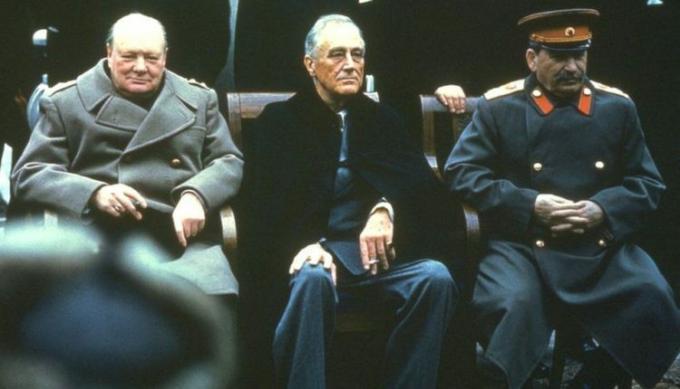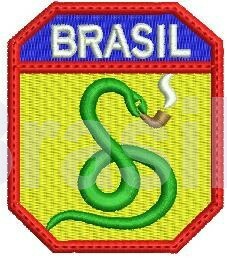For centuries the Catholic Church exerted a great dominion in European society and in territories dominated by the conquerors. The expansion of Protestant ideas shook the hegemony conquered by the Christian institution, the solution would be to react by promoting a reform in the structures of Catholicism.
The revolution caused by the German monk Martin Luther when he released his ninety-five theses started a serious crisis within the powerful Catholic Church. The accusations of abuse of power and the sale of indulgence practiced by the institution led many faithful to abandon the domain imposed by the clergy.
Luther, at the same time that he invested in unmasking the abusive practices of the church, also contributed to the emergence of other religions known as protestants.
What was the Counter-Reformation? THE Counter-Reform or Catholic Reformation it was an initiative that aimed to reconquer the lost faithful after the dissemination of Martin Luther's ideas and to moralize the entire clergy, corrupted by years of abuse of power.
At the same time as it sought to regain its credibility, the church launched itself in an attempt to adapt its dogmas to the new economic model: commercial capitalism.
One of the reasons that contributed to the weakening of Catholicism in Europe is due to the fact that the Pope condemn the accumulation of profits, which in turn was defended and encouraged by the new religions. The bourgeoisie, which grew stronger every day, soon sought refuge in Protestant ideas, abandoning the impositions of the Catholic Church.
The Society of Jesus
The first step towards Catholic reaction was the foundation of the Society of Jesus, created by the Spanish priest Ignacio de Loyola in 1534. The religious order had the mission of containing the advance of Protestantism through the teaching of Catholic dogmas. The Jesuits followed an almost military discipline, their weapon was the deep knowledge of the sacred scriptures.
In addition to spreading the Catholic faith wherever they were, the company's members helped the European explorers establish their dominance in the newly conquered continents.
Peoples from Africa, Asia and America were influenced by the teachings of the Jesuits. In the beginning, the mission of the religious was to “domesticate” the natives, thus facilitating their domination.
In the territories where the components of the religious order were established, they spread Christian ideas and taught their language to the natives, which contributed to the acculturation of these peoples.
The Jesuits played an important role in educating the places they passed through, being responsible for founding educational institutions in different regions.
The Council of Trent
- Free Online Inclusive Education Course
- Free Online Toy Library and Learning Course
- Free Online Math Games Course in Early Childhood Education
- Free Online Pedagogical Cultural Workshops Course
What was the council of Trent? Held between the 1540s and 1560s in the Italian city of Trento, the Council was convoked by Pope Paul III and had great importance in the context of the Catholic Reformation.
The Ecumenical Council of Trent discussed the problems related to Christianity and defined the form of reaction of the church to contain the Protestant advance. Among the resolutions, it was decided to continue the validity of the following decisions:
- free will
- the worship of saints, including the virgin Mary, mother of Jesus
- the reaffirmation of the supremacy of the papal power
- the publication of the Index Librorum Prohibitorum, in other words, the list of Books Forbidden by the Church, which included, among other works, “Decameron”, by Boccaccio, and “O Elogio da Loucura”, by Erasmo de Rotterdan
- the preservation of mass rites
- prohibition on the sale of indulgences and ecclesiastical offices
One of Characteristics of Protestant Reformers it was their high degree of knowledge and facility in oratory, which brought them closer to all members of the social class. In an attempt to increase the theological knowledge of clergy, the church instituted through the Council of Trent the creating seminars.
Another determination established by the Council was the permanence of the Holy Office of the Inquisition or Court of the Holy Inquisition. The decision was part of a strategy to fight the infidel reformers.
Heretics, as those who went against the Church's determinations were known, were judged by the Holy Office with extreme rigor. The Court supervised and normalized the Christian faith and the lives of the faithful.
As was the case at the height of the power of the Catholic Church, the Tribunal of the Holy Inquisition continued to persecute and cruelly punish those who disagreed with the impositions of the clergy. Inquisitorial persecution was employed not only on Protestant reformers but on everyone suspected of heresy, from ordinary citizens to even church members. The continuation of torture and unfair trials has resulted in the death of thousands of people.
THE maritime expansion initiated by the European metropolises facilitated the spread of the Inquisition to the conquered territories. Spain established the Tribunal of the Holy Office in three of its colonies: Lima, Mexico and Cartagena.
The Portuguese also followed in the steps of the Spaniards and submitted their colonists to the judgments of the Catholic Court. Together with the conquerors, the metropolises sent to the “New World”, members of the clergy responsible for investigating cases of possible heresy among the colony's inhabitants. This act became known as visitations.
Many intellectuals suffered severe persecution during the Counter-Reformation. Names such as Galileo Galilei, Giordano Bruno, Isaac Newton, among others, were included in the list of authors and books banned by the church: the Index. In addition to the works of these authors, the Lutheran, Calvinist, Calvinist, and Anglican bibles were also among the prohibited books. This practice demonstrated that intolerance, censorship and violence continued to be part of the actions of the Catholic Church.
The censorship of these intellectuals was an obstacle to scientific and cultural development on the European continent during the Modern Age. Many of the studies carried out by scientists were carried out in secret. Protestantism also suffered from the disagreement of ideas between the new religions that emerged from of the teachings of Martin Luther, which contributed even more to the strengthening of intolerance religious.
THE Catholic Reformation it was essential to contain the advance of Protestant religions in countries like Italy, Spain and Portugal. As a consequence, the territories colonized by these metropolises were strongly influenced by the Catholic dogmas, causing Catholicism to remain their religion for many centuries official. This Christianization of the newly conquered territories led to the recovery and strengthening of the Catholic Church.
Lorena Castro Alves
Graduated in History and Pedagogy
The password has been sent to your email.


